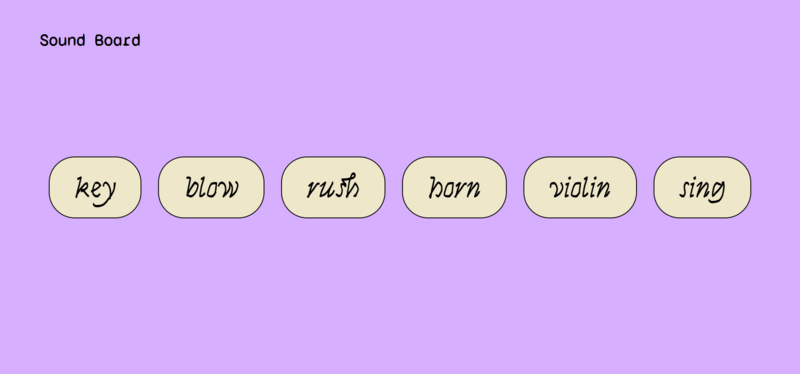Caretakers Week 3
Caretakers Week 3
Riviera, Lorenzo, Senka
Etherpad for the planning of the episode:
[1]
Planning
0–0.10h > Give context into what we're doing: (duration: 5-10min)
Who are we and what are we doing?
0.10–0.40h > Allowing space for pre-recorded material, group contributions, sound boards (possibly at the beginning)
- Ursula Franklin [https://archive.org/details/the-real-world-of-technology] (part 1 - prescriptive and holistic technology - Senka edits to duration of: 30 minutes)
0.40–1.20h > Imaginary Future Protocols
+ Livecoded remix of archived material from Worm
+ Call in?
1.20–2.00h > Everyone really wants to know about archives but at this point they're too afraid to ask
Read out loud highlighted Phelan + annotations (two channel panning) - weaving reading - once you're done reading, hand off the text to the next person
+ if we have too much time do a performative reading of chiming in > from the Reading Rhythms Club zine
- read annotations after the highlighted part
|
Protocols for the Broadcast
Etherpad
- All 3 of us spend 40 minutes each in the Etherpad to remain in communication with the root folder
Collecting personal protocols
- interaction / feedback with the root folder
- Ask the group to write a protocol and articulate why the protocol is important to them
- Expanding on a protocol
- Request for protocols on Zulip;
- Expanding our audience/ audience development
- Record the protocols on a soundboard (routines, ways of going about things)
Imaginary Future Protocols Protocol (text to send out)
- Invitation to write down your protocols on a shared pad (this could be a routine, a personal protocol, or one that relates to collective, or specifically our group)
- Record yourself expanding on the meaning of the protocol (Why this protocol? What does it mean to you?)
- The protocols are only accepted when done voluntarily (you don't have to.)
- Post the protocol recording >>> post on the wiki page: Imaginary future protocols (link here)
Phelan text
- paste text on the Etherpad
- everyone highlights a part of the text we will read outloud and annotates it
- relate the text more to archives and protocols
- scann the text and add a comment next to every part you think relates to Archive and Protocol
- One person reads the annotations and another the text - interruptions are welcome (one is panned left one right)
- Use the soundboard I have coded with my sounds to signal when a new annotation arises and when a new chapter starts. Find soundboard here> [2]
Chiming in / Choral reading
This was a reading proposal I had given from the zine Julia Wilhelm and I made for our on-going collaboration Reading Rhythms Club, an experimental nomadic reading club.
The instructions for the reading method are roughly:
- One person starts reading the text
- The others join in, reading words or sections they want to sonically highlight, emphasize and echo
- Embrace the awkwardness until you all sync
Fetching recordings from chopchop
Instructions provided by Riviera:
Open up a terminal:
ssh username@145.24.139.16
tree /media/worm/radio
cd /media/worm/radio/\$RECYCLE.BIN/S-1-5-21-3426670779-3816479968-38713968-1002/\$RVUIP6R
ffmpeg -i inputfile.mp3 ~/outputfile.wav
(Chosen sounds can percussive, elongated, they can be voices.)
Pick sounds at random (the collection is too vast) from:
/media/worm/radio/\$RECYCLE.BIN/S-1-5-21-3426670779-3816479968-38713968-1002/\$RVUIP6R on chopchop
Once you picked a sound, use FileZilla to download them on your computer
In total 3 to 9 sounds will be used
(If you have variations of the sounds you can place them in a folder)
Potentially collaborating with Tidal Cycles network setup
They need to be wav files. You can convert to wav using:
$ ffmpeg -i INPUTFILE OUTPUTFILE
so, for example:
$ ffmpeg -i /media/worm/radio/\$RECYCLE.BIN/S-1-5-21-3426670779-3816479968-38713968-1002/\$RVUIP6R/awesome-recording.mp3 ~/awesome-recording.wav
|
Soundboard
For reading the Phelan text and annotations, we decided to include sounds as signifiers for when a next annotation arises, or when we start reading a new paragraph. This was done to provide easier navigation through the text, since what we're doing are a kind of sonic highlight.
For this I HTML-ed and CSS-ed a little prototype of a soundboard. Very simple and rudimentary, there are buttons, you can press them. Sound bits taken for Riviera's livecoding were included in it, and you can play multiple at a time, which means they will overlap. Soundboard can be found on chopchop >>[3]
It looks something like this>>>
Reflection
Shownotes for everyone in the aquarium [4]
Key Insights
- Jitsi interaction can be accomplished, people just have to tune in and turn of the broadcast. This way they will only listen to the call without delay.
- The musicality of the chiming in reading was liked, it opened the text up more and kept people's attention
- Background livecoding was well received, although at times distracting for us to read with
- The lecture of Ursula Franklin built a firm ground to talk about our personal protocols

